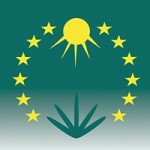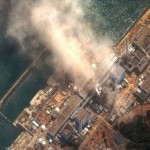
Washington, D.C. – Just weeks before the global climate negotiating session in Cancun, the trend of investing in renewable sources of energy, away from high-emissions sources and toward clean energy, sounds a positive note for real climate-smart development.
With support from the Clean Technology Fund (CTF), fourteen middle income countries – Algeria, Egypt, Indonesia, Jordan, Kazakhstan, Mexico, Morocco, Philippines, South Africa, Thailand, Tunisia, Turkey, Ukraine and Vietnam – plan to radically rebalance their national energy portfolios by investing in renewables at a large scale, the CTF governing body was told in its meetings which concluded here on Friday. The CTF Committee welcomed the trend shown in the project pipeline laid out in the CTF Operational Report, which detailed a first round of renewables projects for a total of $ 2.4 billion to implement these plans, expected to finance around 4,255 megawatts with a potential to scale-up around 39,200 megawatts.
Of particular note is the ambitious South African wind power and concentrated solar power project, provisionally approved by the Committee pending appraisal for technical and cost specifications, which promises to expand the South African clean energy landscape significantly.
Acknowledging his own country’s and others’ path-changing commitments to low-emissions growth, South African Committee Member Zaheer Fakir said, “As developing countries, we are on the cusp of an energy revolution, and the CTF offers us the door through which we can go to access the needed support, financially and technologically.” Fakir, who also serves as CTF Co-chair, added, “The Committee welcomes the tremendous upsweep of action these countries are demonstrating, and looks forward to beginning to see the results of these ambitious commitments.”
During the CTF meeting, an additional country, Nigeria, also submitted and received endorsement for an investment plan which contains renewable energy action, which can be implemented when CTF resources sufficient to finance their plan become available.
The $ 4.5 billion CTF, one of two primary funds under the $ 6.4 billion multilateral Climate Investment Funds (CIF) channeled through the multilateral development banks, is expected to support an overall portfolio of projects covering renewables, energy efficiency, and clean transport, and to leverage up to $ 40 billion, $ 8.4 for every CTF dollar invested.
In addition, six low income countries – Ethiopia, Honduras, Kenya, Maldives, Mali and Nepal – intend to invest in renewable energy services as a means to grow their citizens’ often badly-needed energy access and leap-frog into climate-friendly development, with support from the Scaling Up Renewable Energy Program in Low Income Countries (SREP). As the six pilot countries gathered in Washington and explored early reflections on possible far-reaching plans they will consider under the SREP, the SREP Sub-Committee opened the door for them to develop their renewable energy plans by agreeing to a set of operational and financial modalities.
“Nearly 70 percent of Sub-Saharan Africa’s people, both urban and rural, lack access to basic energy services like electricity. These country pilots hold a dual promise: both for long-awaited and badly-needed energy access, and for Africa to help take a lead on reshaping the global clean energy map,” said Mafalda Duarte, Principal Climate Change Specialist for the African Development Bank, which will help countries implement three of the six SREP pilots.
In addition to the focus on clean energy, the CIF governing bodies took action to operationalize plans for the eight countries running pilots under the Forest Investment Program, and the nine countries and two regions running pilots under the Pilot Program for Climate Resilience. A total of 45 developing countries now have pilot programs under the CIF.
“This is a potent commitment to climate action,” stated Andrew Steer, World Bank Climate Change Envoy and Co-chair of the $ 1.9 billion Strategic Climate Fund, the second primary CIF fund. “These countries are creating a badly-needed global trend which could reshape national and global markets, policies and institutions. As we turn our eyes toward Cancun, it would serve us well to take careful account of the actions – and the new leadership – emerging in developing countries on climate-smart development.”
To conform to the criteria of the CIF funds, all countries with CIF pilots must ensure that their plans engage all relevant stakeholders, create real potential for market and policy transformation, mobilize funds from public and private sector partners, and contribute to a small but growing bank of knowledge about low-emissions and climate-resilient approaches to development.
In the margins of the CIF week-long governing body meetings, pilot country representatives from each of the CIF forest, climate resilience, and low income renewable programs also gathered for day-long brain-storming sessions, to compare notes and exchange knowledge as their pilot programs develop. With all of the CIF funds and programs now operationalized, these pilot country dialogues will become an important part of the knowledge sharing component of the CIF, along with the annual Partnership Forum gathering of stakeholders. The 2011 Partnership Forum is scheduled for March 2011 in Tunis, hosted by the African Development Bank.
The Climate Investment Funds provides a unique financing instrument designed to support low-emissions and climate-resilient development through scaled-up financing channeled through the African Development Bank, Asian Development Bank, European Bank for Reconstruction and Development, Inter-American Development Bank, and the World Bank Group.
For more information, please visit www.climateinvestmentfunds.org.
Source: World Bank Press Release dated November 15, 2010.














